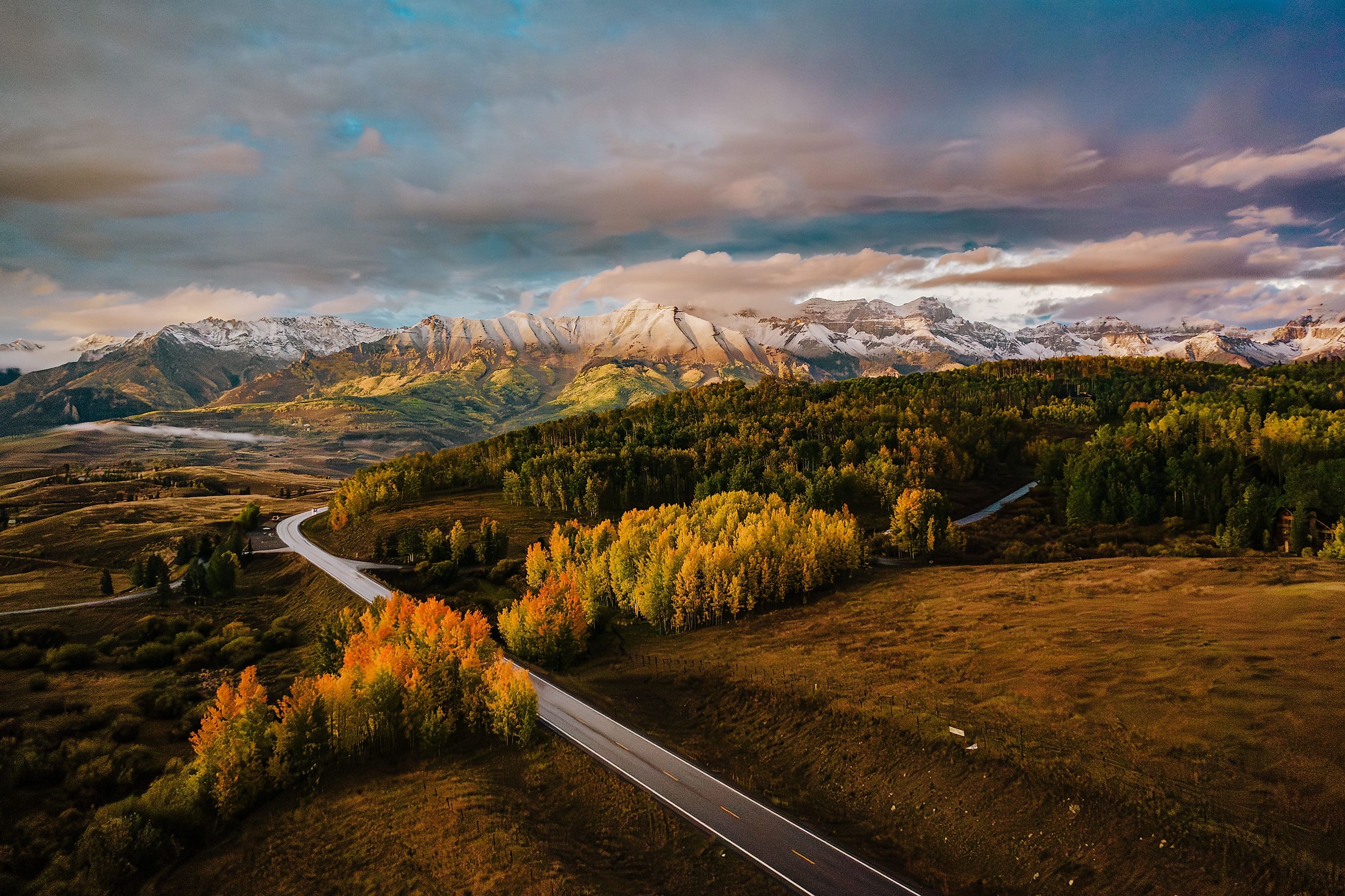
2024's 11 Most Scenic Colorado Towns
Colorado has an abundance of exceptionally beautiful mountain scenery, and the Centennial State’s ski resorts are world-famous for their alpine thrills. However, ski resorts do not have a monopoly on natural beauty. Beyond the ski slopes, Colorado has plenty more tall mountains and verdant forests in protected parks and public lands throughout the state. Even better, Colorado also has a diverse array of stunning deserts, vibrant red rock formations, and additional natural treasures worth exploring.
With so much to see and do on both sides of the Front Range, there’s never a shortage of uniquely eye-catching scenery to behold. Once you start to get up close and personal with these 11 most scenic Colorado towns, you may get the urge to explore even more of what this mighty Rocky Mountain state has to offer.
Aspen
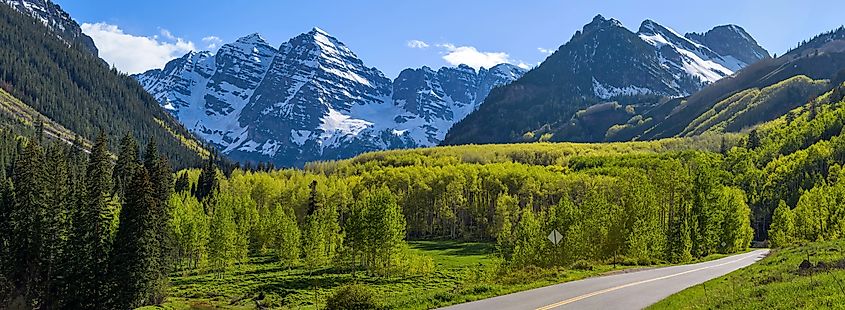
Panoramic view of Maroon Bells in Aspen, Colorado.
It’s hard to discuss scenic Colorado towns without mentioning the amazingly gorgeous scenery of Aspen. About 160 miles southwest of Denver, this storied village in the Elk Mountains has evolved over the years from a rough-and-tumble silver mining town (in the 1870s) into one of the world’s most desirable ski towns. Yet, at local parks like the John Denver Sanctuary along the Roaring Fork River, it’s easy to escape the hustle and enjoy an oasis of serenity amidst the aspen groves and by the stream.
About a six-mile drive out of town, you can reach North America’s most photographed mountain peaks at the Maroon Bells, or a set of bell-shaped, jagged stone mountains formed over 300 million years over the glacial Maroon Creek Valley. Not only do the Maroon Bells have six miles of pet-friendly trails for hiking and biking, but camping reservations are also available. Meanwhile, at the North Star Nature Preserve, this stretch of the Roaring Fork River is open to boating and paddleboarding, and the park includes natural wetlands and an elk migration corridor.
Colorado Springs
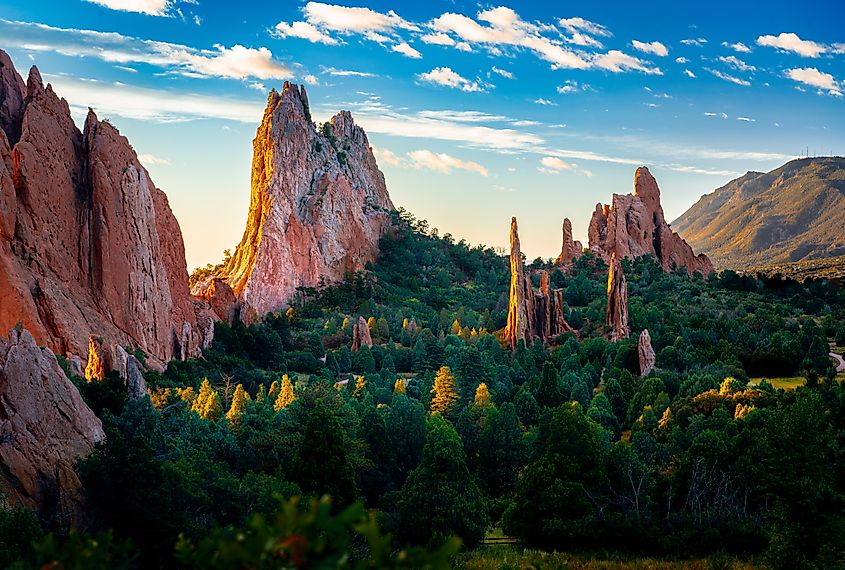
Colorado Springs may be the state’s second most populous city (behind Denver), yet this city’s natural scenery comes second to none. Colorado Springs is home to Pikes Peak, which rises 14,115 feet above sea level, and the 19-mile-long Pikes Peak Highway leads up from the city all the way to the summit while sporting panoramic views of the surrounding mountains and the valley below. The highway also provides access to the North Slope Recreation Area, which has three reservoirs for fishing, along with some 10 miles of hiking and biking trails.
For even more breathtaking natural beauty, head to the Garden of the Gods. Named by surveyor Rufus Cable when he and his colleague M.S. Beach came here to launch a townsite in 1859, this fascinating collection of sandstone, conglomerate, and limestone rock formations formed around 290 million years ago became a public park in 1909. Since then, this red rock adorned park has become a perennially popular spot for hiking, biking, rock climbing, and even horseback riding (on designated trails).
Breckenridge
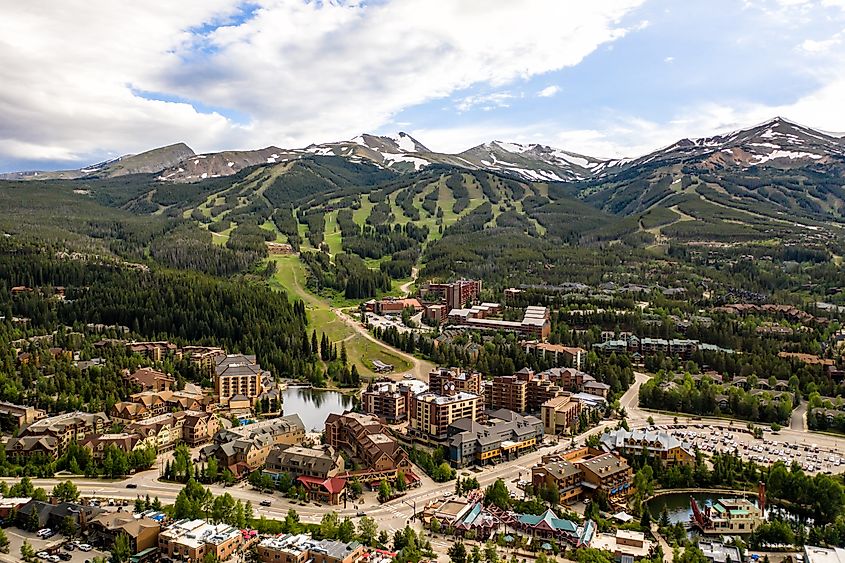
With one of Colorado’s largest ski resorts that extends for 2,908 acres across five mountain peaks (about 80 miles west of Denver), Breckenridge is a prime destination for skiers and snowboarders at all levels. But beyond the slopes, Breckenridge also has over 100 miles of hiking and biking trails in and around town. Even from Main Street in the heart of town, you can take the Sawmill Creek Trail that follows the creek uphill to Sawmill Reservoir and enjoy phenomenal mountain views. Also near downtown is Cucumber Gulch Wildlife Preserve, which is great for hiking and biking during summer and for cross-country skiing during winter.
If you prefer exploring on the open water, Browns Canyon National Monument has ample stretches of stream for whitewater rafting, including the Numbers section of the Arkansas River, which is one of Colorado’s best Class IV runs. Also, the Blue River near Silverthorne and the Upper Colorado River near Kremmling are great for rafting near Breckenridge. And if you’re into stand-up paddleboarding, Maggie Pond and Lake Dillon are picture-perfect for easy gliding on calmer waters.
Telluride

In a box canyon some 362 miles southwest of Denver and 321 miles northwest of Albuquerque (New Mexico), the town of Telluride feels sheltered from all the troubles of the outside world. This town is surrounded by multiple mighty mountain peaks, including Wilson Peak, which rises 14,023 feet above sea level. And yes, the Rock of Ages Trail is open to the public, extends just over nine miles, and provides public access for camping, fishing, cross-country skiing, and even hiking all the way up to Wilson Peak’s summit.
During the winter season, the San Juan Mountains have several trails open for backcountry skiing, snowshoeing, and snowmobiling, and they have incredible views of the region’s tallest mountains. During the summer, the San Juan Mountains offer exhilarating rock climbing at Cracked Canyon-Ophir Wall and Fall’s Wall, fishing at spots like Beaver Lake and Blue Lakes, and horseback riding at Big Park and Cow Creek. And, of course, you can hike trails like the iconic Bridal Veil and discover Colorado’s tallest free-falling waterfall (at 365 feet).
Grand Junction
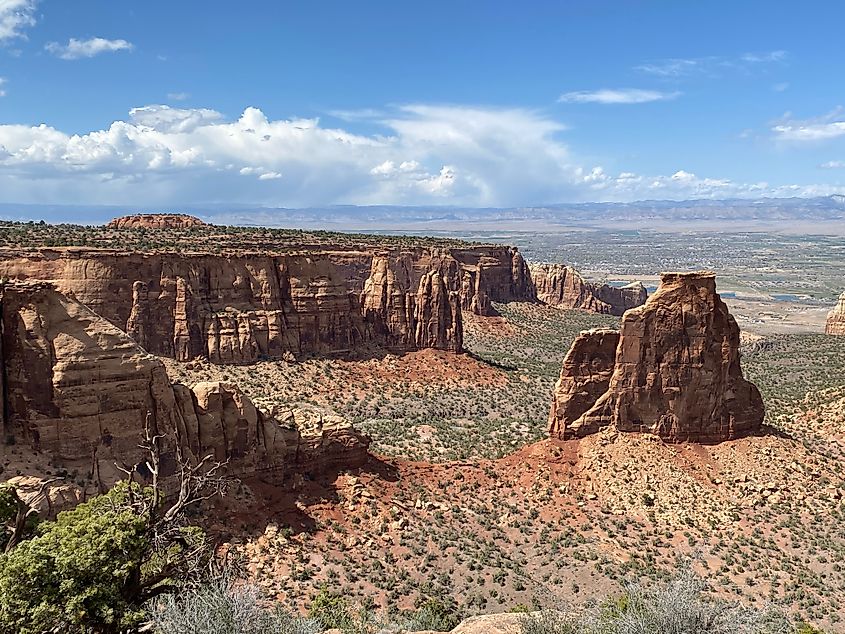
With an elevation of only around 4,600 feet above sea level and precipitation averaging around nine inches of rain annually, Grand Junction’s desert environment marks a fascinating contrast to the verdant mountain forests to the east. At the nearby Colorado National Monument, you can feast your eyes on panoramic views of red rock spires, sheer-walled canyons, and pinyon and juniper forests that add just the right amount of greenery to the landscape. The historic Rim Rock Drive provides an accessible introduction to the park, including views of rock layers dating as far back as 1.7 billion years. For more adventures on foot, hike the Canyon Rim Trail and Coke Ovens Trail for exceptional red rock views.
For even more spectacular scenery, head 10 miles west of Grand Junction to Rattle Snake Canyon, where you will find the United States’ second-largest concentration of natural arches, as well as a habitat for wildlife like bighorn sheep. When you’re ready to cool down and get wet, head to the McInnis Canyons National Conservation Lands for boating, fishing, and rafting along the primarily flat water of the Colorado River.
Montrose
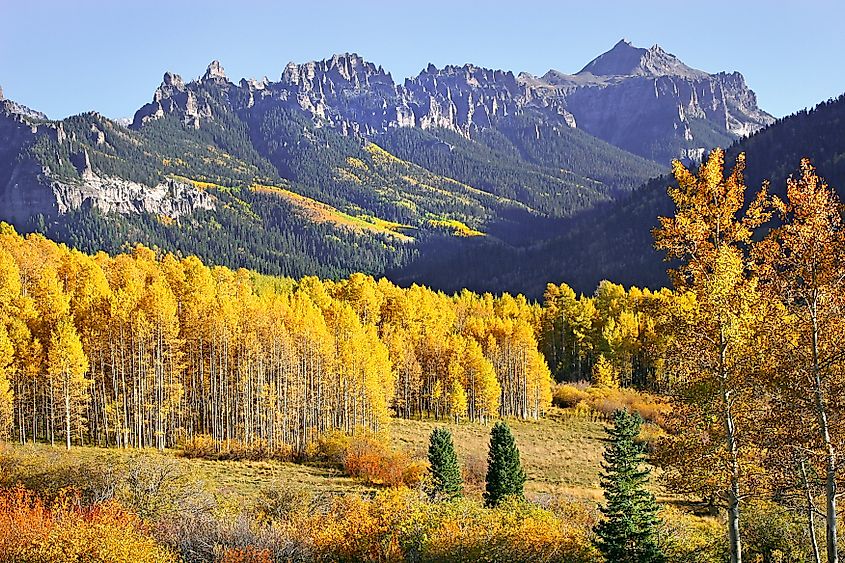
About 60 miles southeast of Grand Junction, Montrose offers a wealth of unique natural scenery that travelers simply have to see to believe. For starters, Montrose is the closest town to the Black Canyon of the Gunnison National Park. Here, you can witness the prehistoric wonder of a 1.8 billion-year-old metamorphic rock layer that was lifted high above ground level 60 million years ago, then buried in a volcanic eruption some 30 million years ago, then re-exposed to the surface when the Gunnison River began flowing here two million years ago.
Drive the North Rim Road to discover incredible views of the Gunnison River flowing far below the North Rim, or take South Rim Road for a smoother (paved road) seven-mile long drive with 12 scenic overlooks where you can peer down and behold over a billion years of natural history in action. When you’re ready to leave the car and enjoy some fresh air, you can hike the Rim Rock Trail (at the South Rim) and catch amazing views of Black Canyon. And for epic adventures on open water, this stretch of the Gunnison River at the park consists of official Gold Medal Waters (as awarded by the Colorado State Wildlife Commission), providing prime conditions for trout fishing.
Crestone
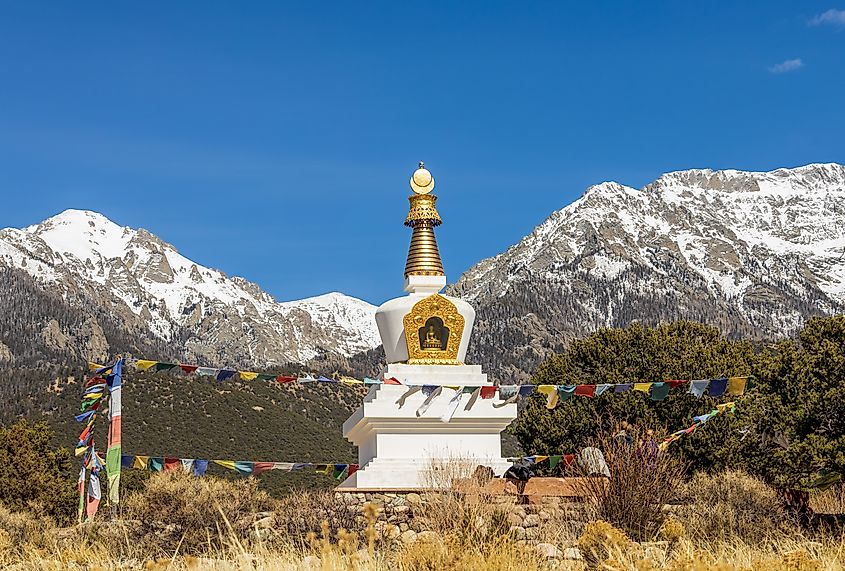
Sitting on the western slope of the Sangre de Cristo range about 165 miles southwest of Colorado Springs, the village of Crestone has some very unique energy. Best known for its eclectic collection of religious monuments, shrines, and houses of worship, the natural scenery outside also looks ethereal at the nearby Sangre de Cristo Wilderness. Out here, you can try hiking and climbing your way to the iconic Crestone Needle, which reaches 14,197 feet above sea level at its summit. Even if you opt to stay at the lower elevations, you can enjoy wondrous views of wildlife like elk, deer, mountain lions, black bears, and bighorn sheep.
Crestone also places you within fairly easy reach of the Great Sand Dunes National Park and Preserve. Not only does this park have North America’s tallest sand dunes, but it also has ecosystems ranging from alpine at the mountain summits to grasslands and wetlands at the valley floor. For a uniquely fun experience, try sledding or sandboarding at the dunes. Whenever you feel like cooling down, take a dip into Medano Creek. If you’re visiting during the spring or fall, you may spot flocks of sandhill cranes migrating between southern New Mexico and Canada.
Dinosaur
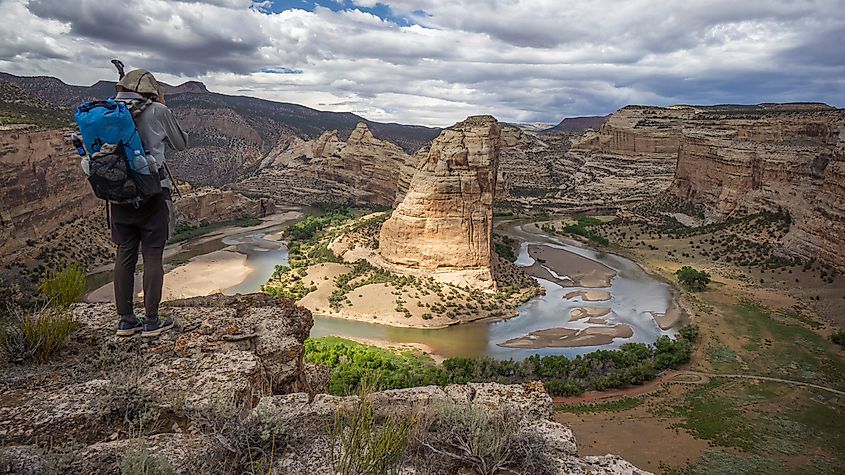
At first glance, Dinosaur appears to be another tiny, sleepy town on the Western Slope (about 108 miles north of Grand Junction). Yet upon closer examination, Dinosaur reveals itself to be one of Colorado’s finest hidden gems. In particular, the town of Dinosaur is the closest town to Dinosaur National Monument, which is a literal treasure trove full of dinosaur fossils dating as far back as 150 million years ago. Not only can you view many of the monument’s most famed fossils at the Quarry Exhibit Hall, but you can also enjoy river rafting on the Yampa and Green Rivers, view Indigenous petroglyphs at Swelter Shelter near the Quarry Visitor Center, and enjoy sweeping canyon and river views at Harper’s Corner.
For some genuinely epic wildlife viewing, head to Browns Park National Wildlife Refuge, which is just to the north of Dinosaur National Monument. This expanse of upland sage steppe and pinyon-juniper forests serves as a critical riparian habitat for songbirds like the Lazuli bunting, Wilson’s warbler, black-chinned hummingbird, and Bullock’s oriole, plus it’s a welcoming refuge for mammals like moose and river otters.
Boulder
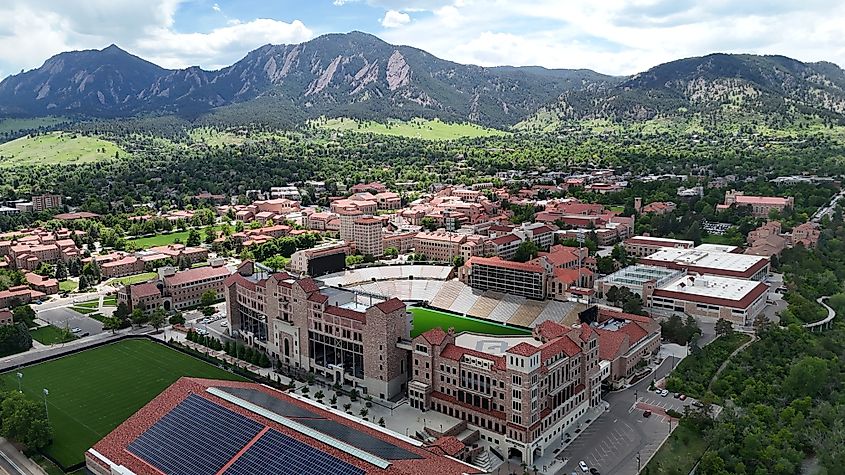
Just 27 miles northwest of Denver, Boulder is best known for the University of Colorado Boulder (CU) and its vibrant downtown area, yet there’s far more to explore beyond the downtown lights. Just a mile from the CU campus (and less than two miles from Pearl Street), you can access the Chautauqua Loop Trail, which takes you up the hills and lets you hike right to the iconic sandstone-adorned Flatiron Mountains. If you prefer exploring on a mountain bike, try the Flatirons Vista Trails for panoramic views of ponderosa pine forests and the mountains. Heil Valley Ranch has another great collection of hiking and biking trails in the mountains.
In recent years, the City of Boulder has launched an innovative accessible trails program to make more of the great outdoors accessible to people of all abilities. More specifically, Wonderland Lake offers a scenic spot for wheelchair-accessible fishing, while the Ute Trail provides a fully accessible path on Flagstaff Mountain providing prime opportunities to see mule deer in the wild. And for the ultimate pet-friendly day out, try the Dry Creek Trail for hiking and horseback riding on the open prairie with stunning mountain views.
Estes Park
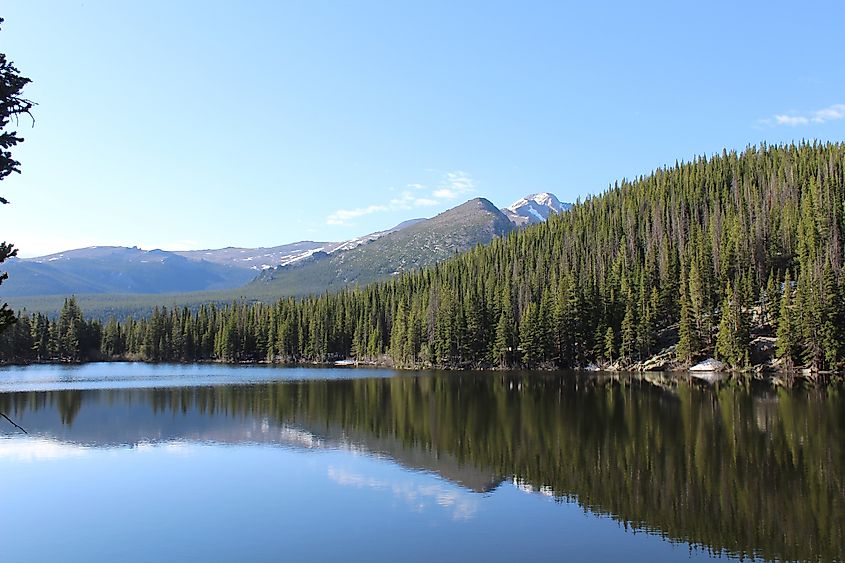
The town of Estes Park may be merely 63 miles northwest of Denver, yet it’s the town that serves as the gateway to one of the United States’ premier wilderness preserves: Rocky Mountain National Park. Throughout the park, keep your eyes out to spot some of the local wildlife that call this land home, including elk, mule deer, bighorn sheep, black bears, and bobcats. If you’re really lucky, you might even get to see some mountain lions and/or Canadian lynx. Depending on when you’re visiting, you may be able to spot birds like white-tailed ptarmigans, blue grouse, Clark's nutcrackers, western tanagers, and mountain chickadees.
For much more active adventures at Rocky Mountain National Park, take the Keyhole Route to rock-climb to the summit of Longs Peak, which is the tallest peak in the park at 14,259 feet above sea level. If you want to bike your way up and down the mountains, take Trail Ridge Road to ride over the Continental Divide to the Colorado River and Grand Lake. And when you want to enjoy an easy day on the open water, areas like Poudre Lake, Glass Lake, and Spirit Lake are safe for fishing, and float tubes are allowed in most waters.
Idaho Springs
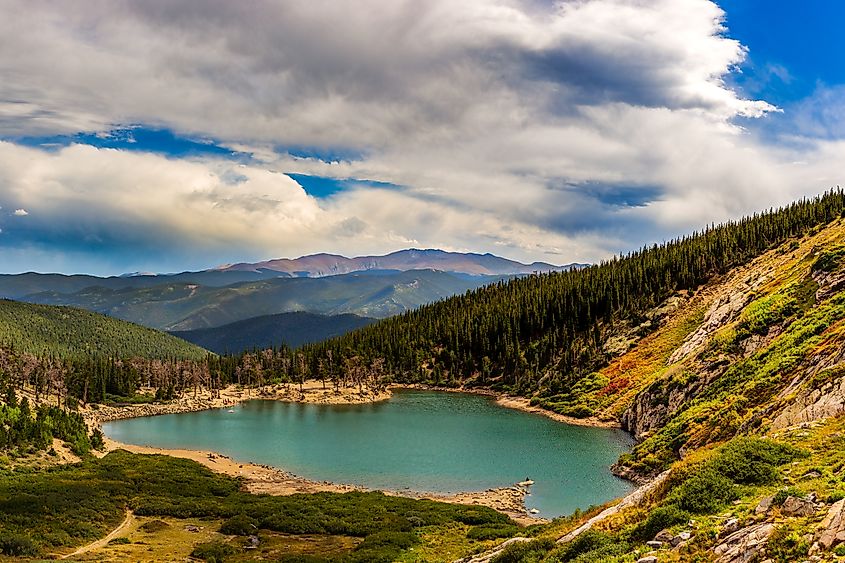
Only about 33 miles west of Denver, Idaho Springs is one of Denverites’ closest options for a mountain getaway. Though this town has a rich history as Colorado’s first mining town where gold was discovered (in 1859), Idaho Springs also has ample natural treasures. The easiest way to start to access these treasures is to use the Clear Creek Greenway. Not only does the main trail offer gorgeous views of the creek and the Rocky Mountains, but it also connects hikers to backcountry trails leading up to four of the region’s fourteeners (or mountains surpassing 14,000 feet above sea level): Mount Evans, Grays Peak, Torreys Peak, and Mount Bierstadt.
When you’re in the mood for cool excursions on the water, the Clear Creek Greenway also provides access to prime fishing and kayaking spots. For more of an easy drive to the top, take the Mount Blue Sky Scenic and Historic Byway to Echo Lake, where you can get off, breathe some fresh mountain air, and take the paved trail to catch wondrous views of bristlecone pine forests, alpine meadows, pristine tundra and native animals like marmots and mountain goats. During the summer season, the Mount Blue Sky Byway is all the way to the summit, where you can see the Continental Divide, the Front Range, and flora and fauna that are usually found north of the Arctic Circle.
Colorado’s Scenic Splendor: A Journey to Remember
No matter which adventures you seek, Colorado has an abundance of wide-open spaces to explore and enjoy. From the colorful high desert landscapes of Dinosaur and Grand Junction to the soaring mountain peaks of Estes Park and Telluride, Colorado overflows with natural beauty and unique scenery to take in. Whether you fancy a transcendental experience at the Great Sand Dunes near Crestone or you seek pure serenity at the Maroon Bells near Aspen, the Rocky Mountain State’s parks and public lands really can lift your spirits like nothing else. If you like to get active in the great outdoors, you will find plenty to love in and around these most scenic Colorado towns.











